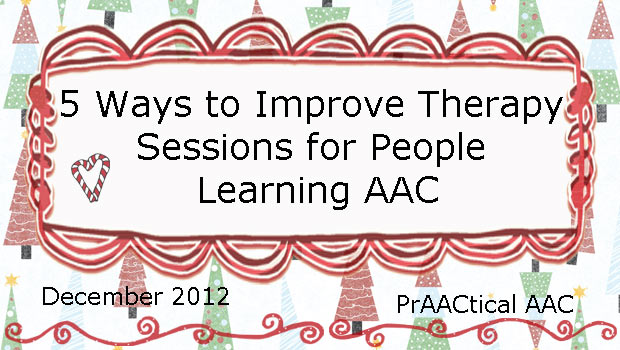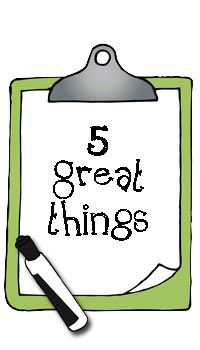5 Ways to Improve Therapy Sessions for People Learning AAC

1. Start therapy as soon as you see the client: Savvy SLPs don’t waste a single second of therapy time. As soon as she saw 4 year-old Jonah in the waiting room, Chloe Clinician started sprinkling him with practice opportunities. They used vocalizations and gestures to greet other people. He ‘signed in’ at the front desk using a sheet she made up for Jonah to trace the first letter of his name. She blocked the door with her foot until he told her to ‘open’ and delayed his access to the beloved elevator button until he asked to go ‘up.’ By the time Jonah got to his therapy room, he had practiced skills in 5 different areas. This makes a clinical supervisor’s heart sing!
2. Speak AAC whenever you talk to the client. We’ve been shouting this from the virtual rooftops for quite awhile, but for those who  missed it, aided language input is the first strategy we teach our budding clinicians. The concept is simple. If you want children to learn a new way of communicating, they have to be immersed in it. Would you learn Mandarin from someone who never spoke it to you? Would you learn sign language from someone who could only sign a list of words? Language learners need competent models in the communicative form they are striving to learn. And they need a lot of that kind of exposure. If we don’t provide that, who will?
missed it, aided language input is the first strategy we teach our budding clinicians. The concept is simple. If you want children to learn a new way of communicating, they have to be immersed in it. Would you learn Mandarin from someone who never spoke it to you? Would you learn sign language from someone who could only sign a list of words? Language learners need competent models in the communicative form they are striving to learn. And they need a lot of that kind of exposure. If we don’t provide that, who will?
3. Visual supports are not just for people with behavioral challenges. They promote language comprehension, enhance learning and memory, and help to keep the lesson focused. Use them and your sessions will be more effective. Challenge yourself to go beyond a visual schedule for the session and use things like: mini schedules showing the steps/parts of a single activity, first/then boards, countdown boards, reminder cards to use key strategies, and graphic organizers.
4. Know your focus. Go into every segment of your time together, every planned activity, and each interaction with a clear idea of your first and second priorities. “Before we get upstairs, I need her to spontaneously request help twice and greet two people.” “The main reason we’re doing this is to get 4 spontaneous SVO sentences that aren’t requests and reject an undesired item twice.” “In this activity, I need to elicit the target word at least 10 times and have her use it in a sentence once.” Don’t be shy about using visual supports for yourself as a reminder. Sticky notes saved many of my sessions.
5. Reflect on the session. We’ve never run a perfect therapy session and chances are you haven’t either. Did an opportunity for eliciting a target language structure occur to you too late to actually implement it? Was it too difficult to use aided language input when you moved from the table to the mini trampoline? Did you get so distracted by the materials that the focus on teaching the target skills were limited? Was the activity too time-consuming to justify the number of client responses you elicited? Did you struggle with your data collection sheet? Take a few minutes to jot down some notes and reminders of things you want to improve for next time. These are the things that make good clinicians better. It’s about progress, not perfection.
–
Filed under: PrAACtical Thinking
Tagged With: 5 thing, therapy sessions
This post was written by Carole Zangari
